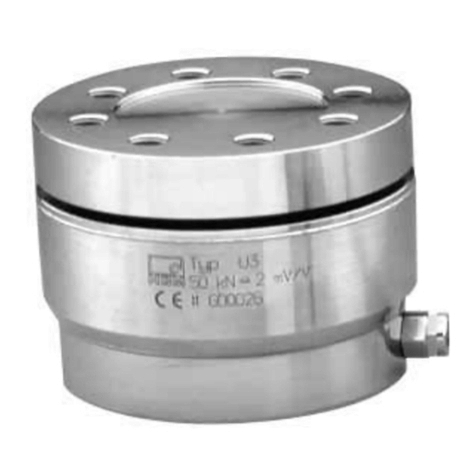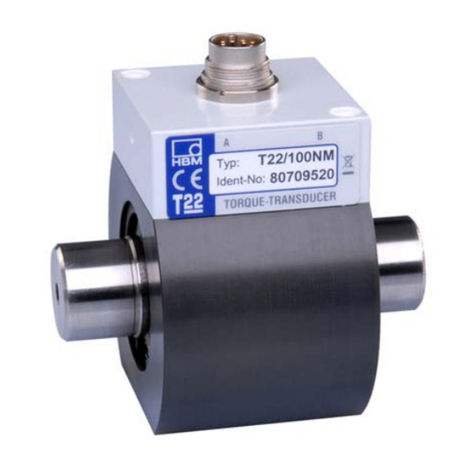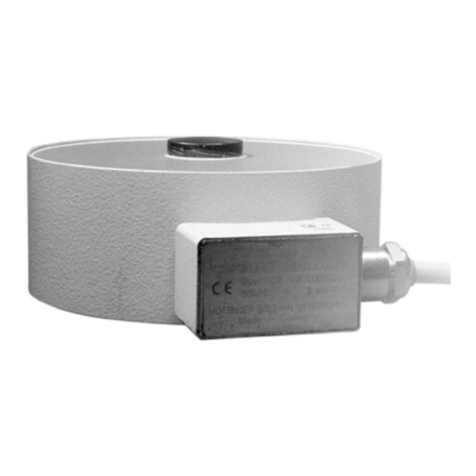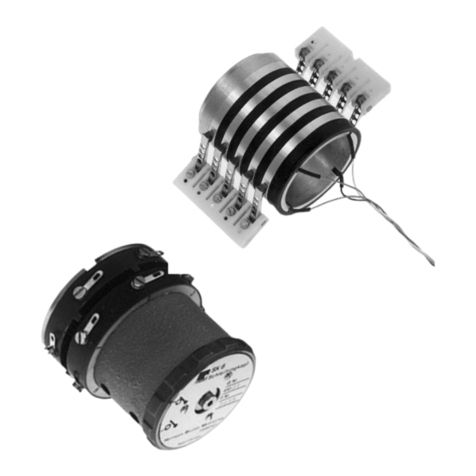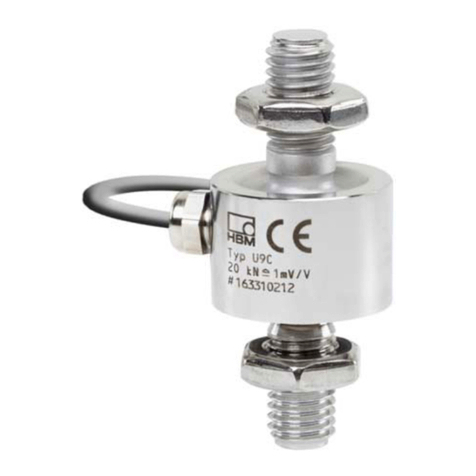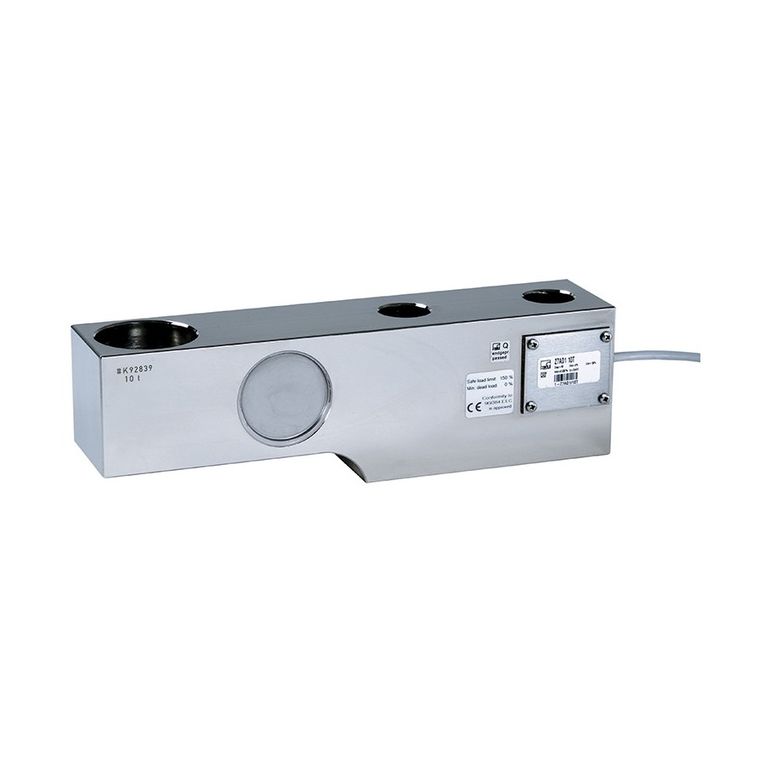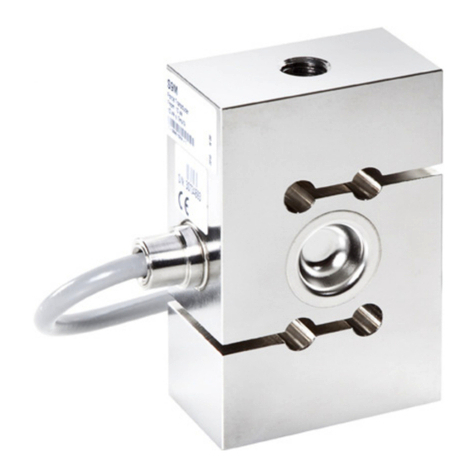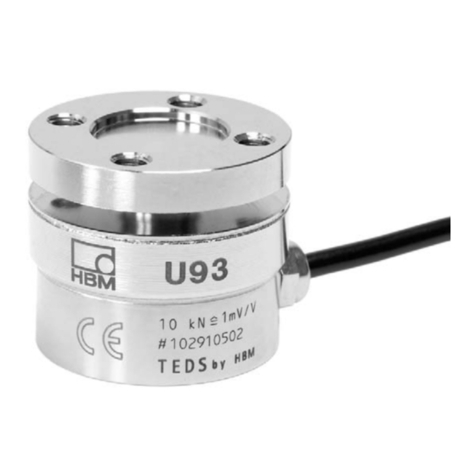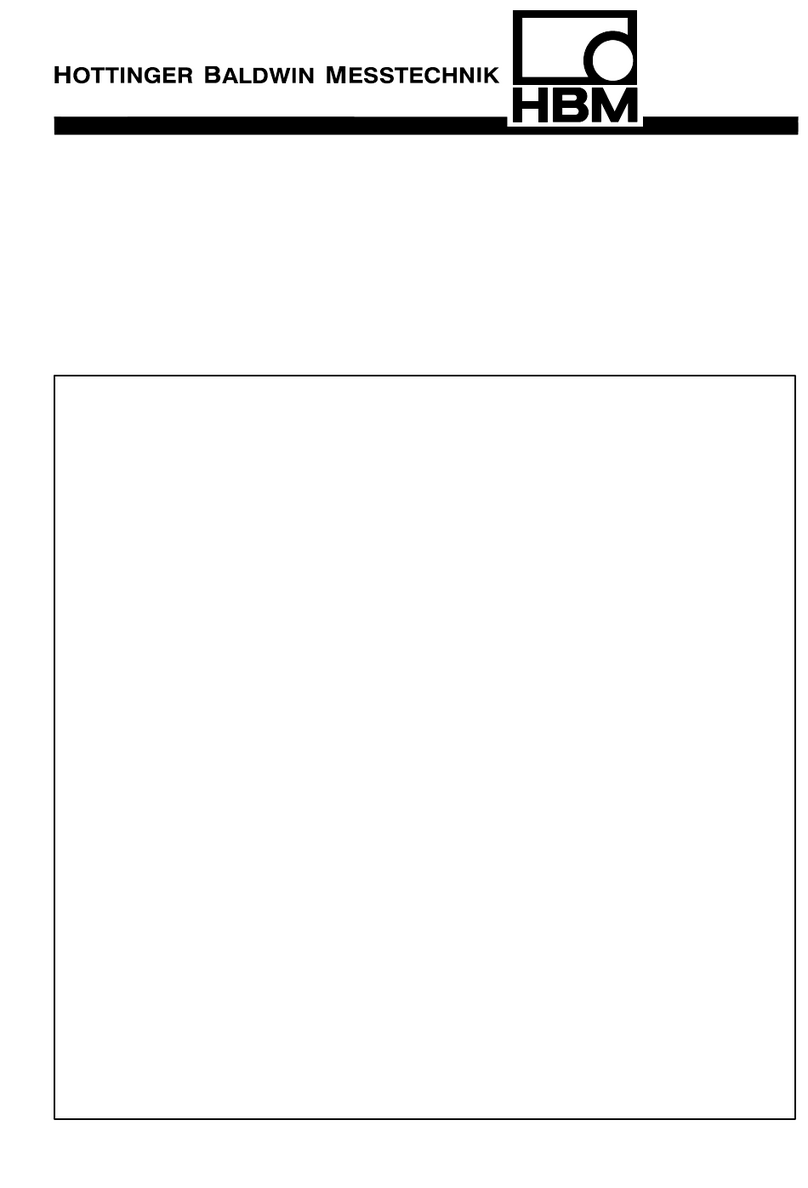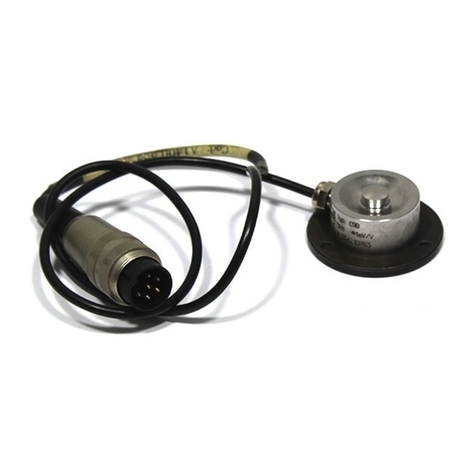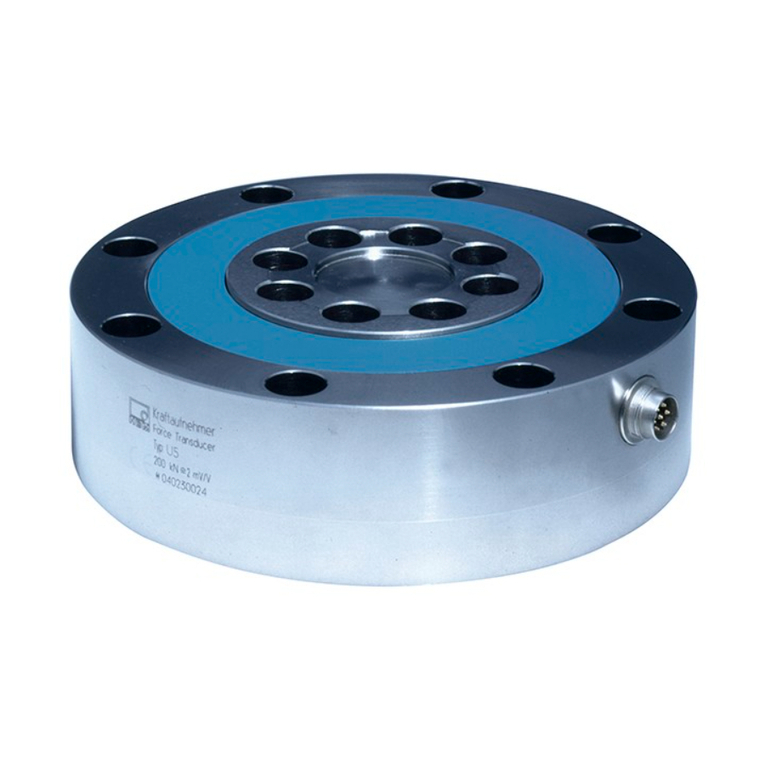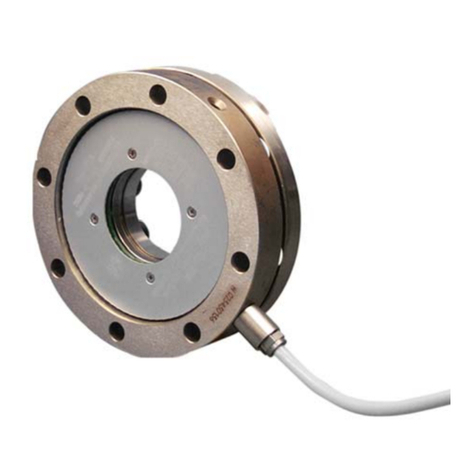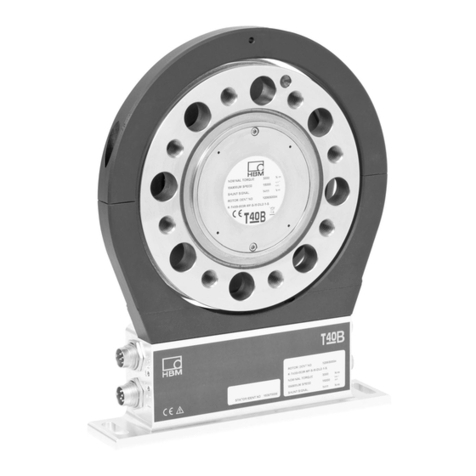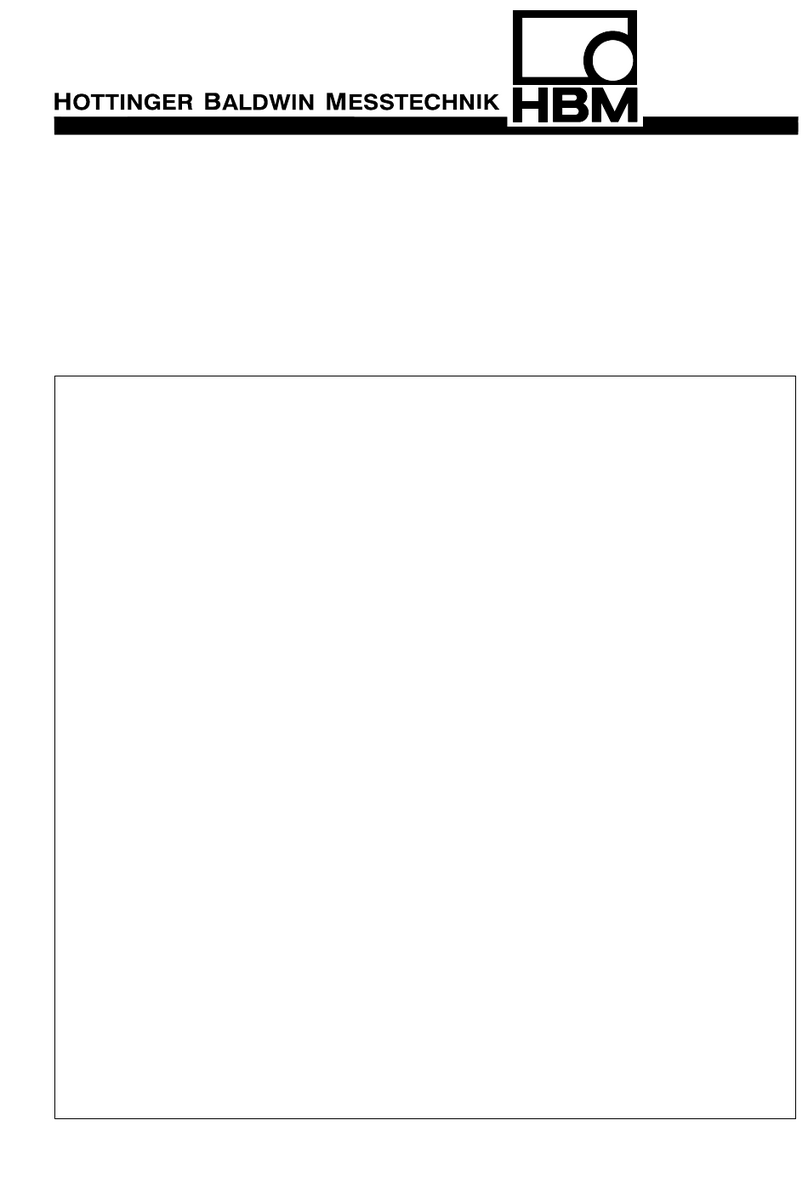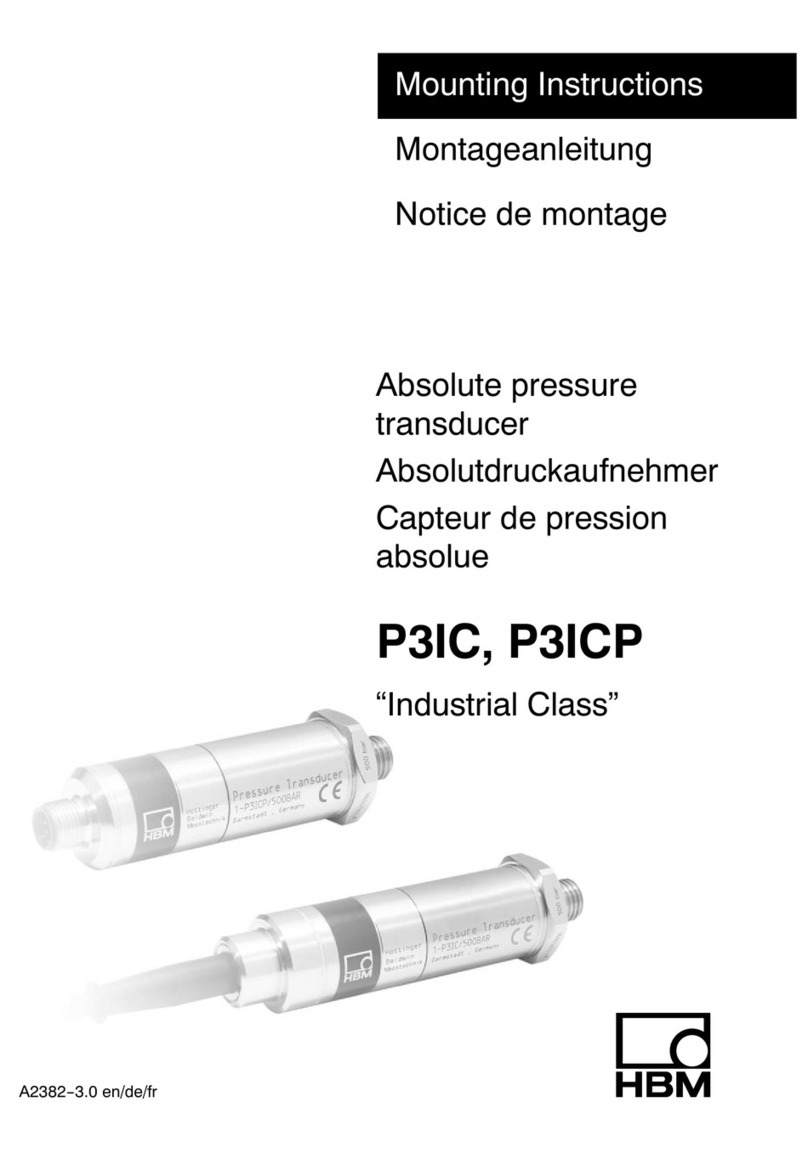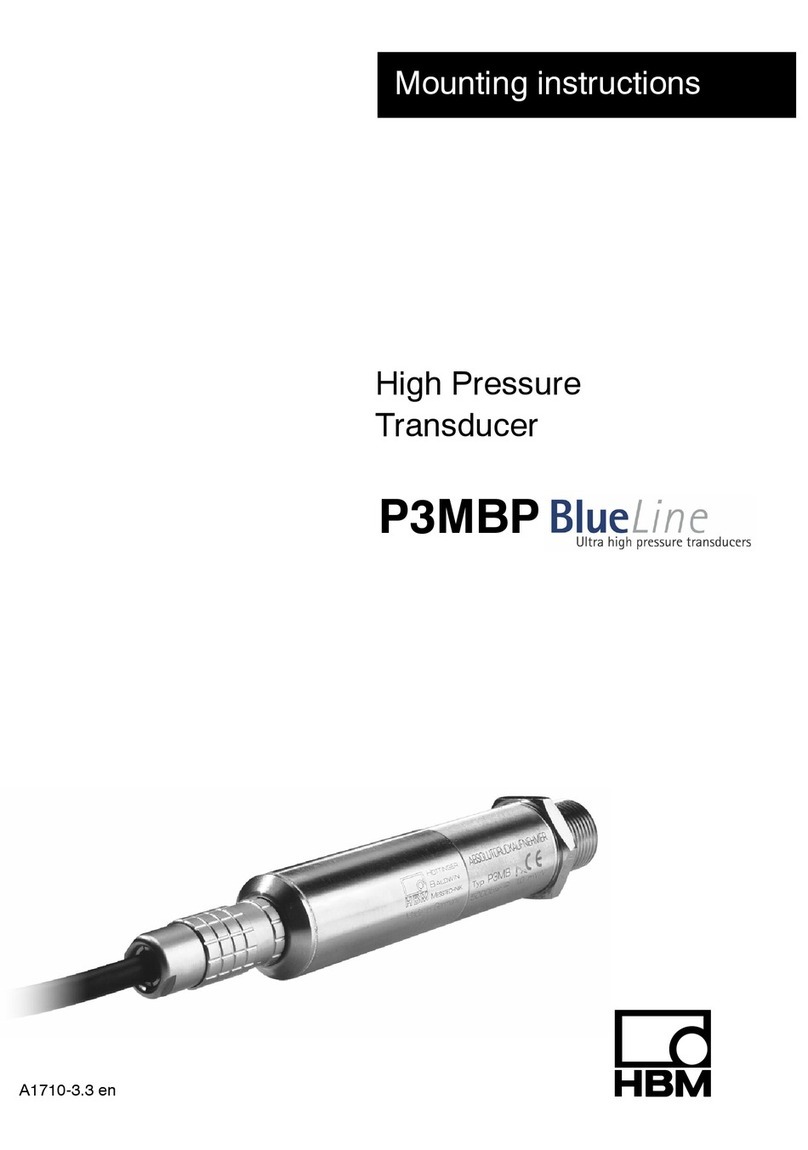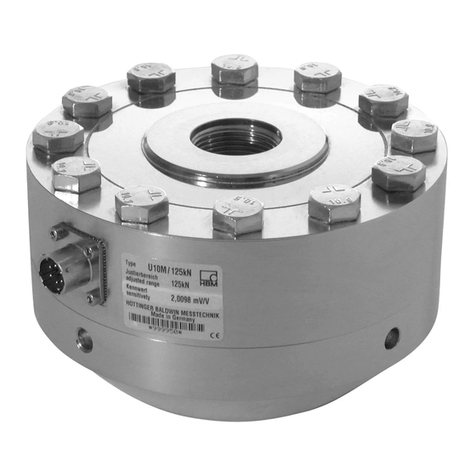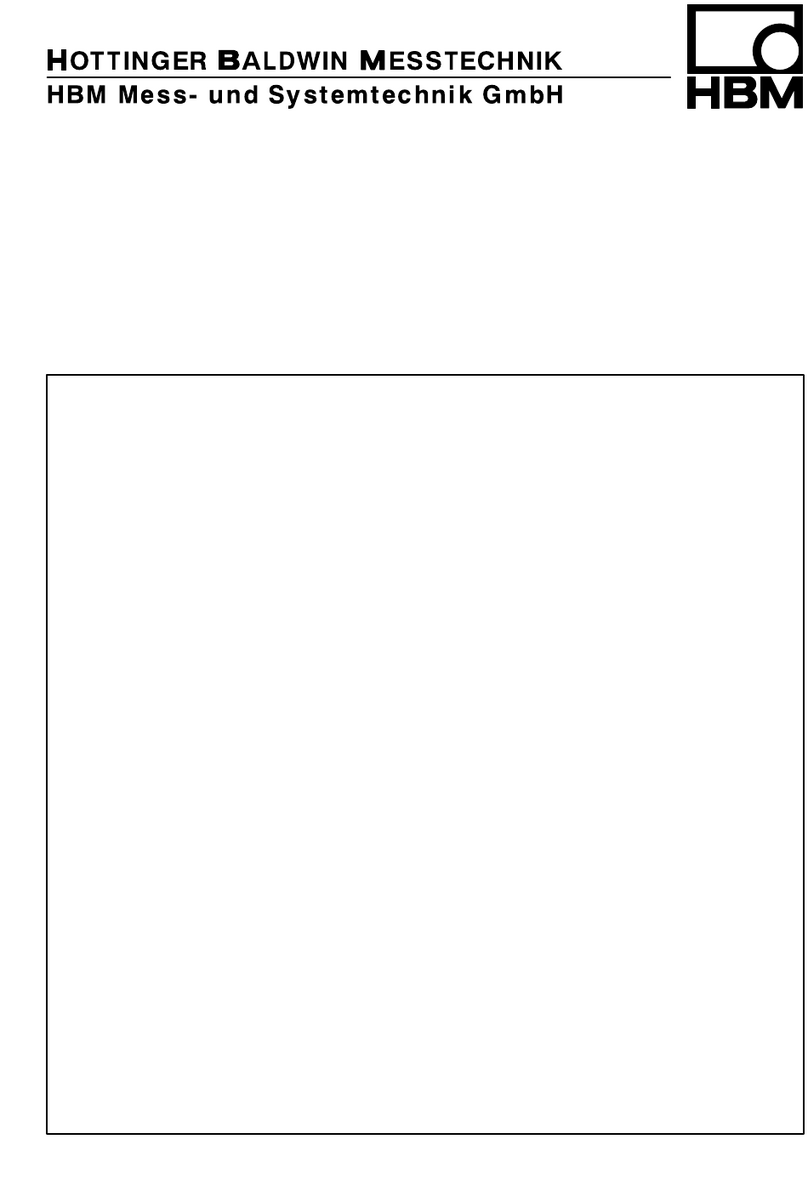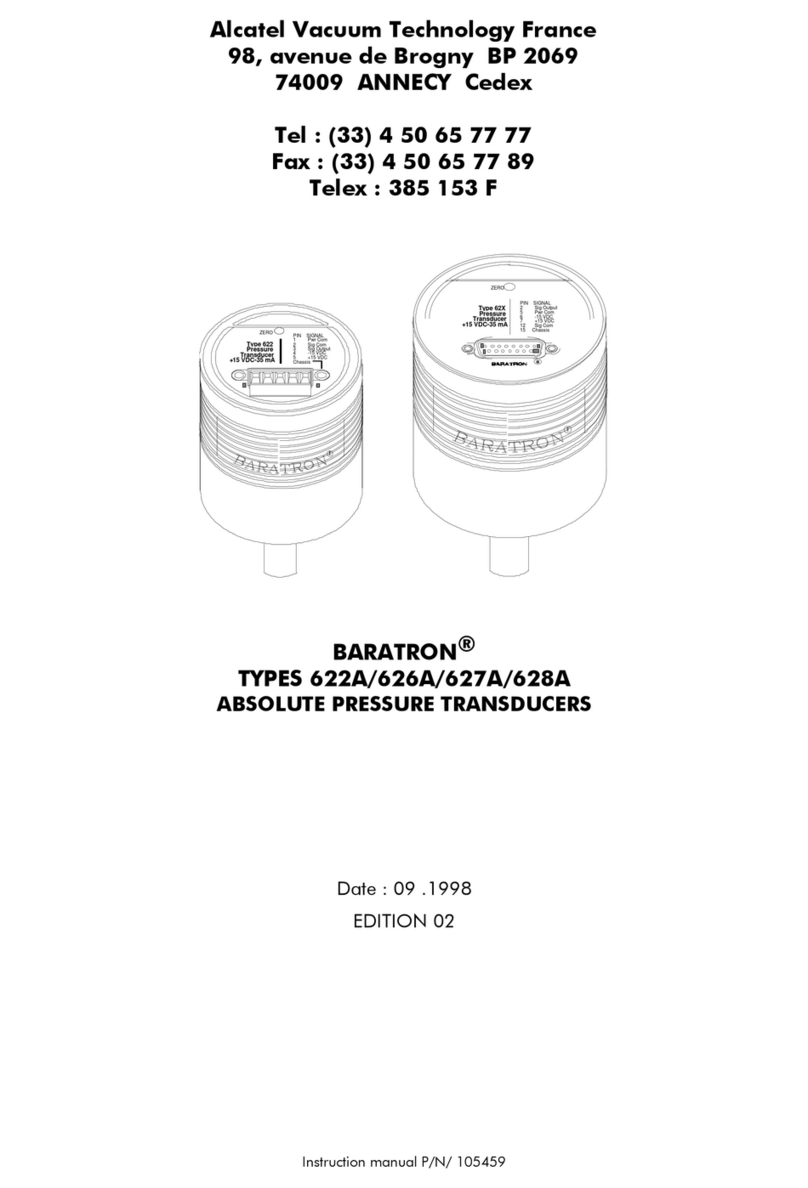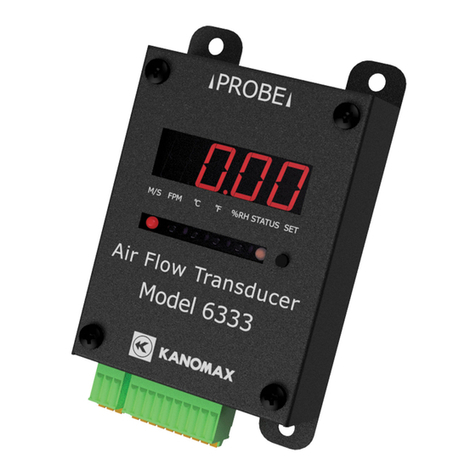
Safety instructions
4A05101_01_YCI_02 HBM: public CFT+
Use as machine elements
Force transducers can be used as machine elements. Note also the "Load-
carrying capacity limits" section and the specifications to ensure the required
overload limit of your application.
Accident prevention
The prevailing accident prevention regulations must be taken into account,
even though the breaking force is well in excess of the full scale value.
Additional safety precautions
Force transducers cannot (as passive transducers) implement any (safety-
relevant) cutoffs. This requires additional components and constructive
measures, for which the installer and operator of the plant is responsible.
In cases where a breakage or malfunction of the force transducer would cause
injury to persons or damage to equipment, the user must take appropriate
additional safety precautions that meet at least the applicable safety and ac
cident prevention regulations (e.g. automatic emergency shutdown, overload
protection, catch straps or chains, or other fall protection).
The electronics conditioning the measurement signal should be designed so
that measurement signal failure cannot subsequently cause damage.
General dangers of failing to follow the safety instructions
Force transducers are state-of-the-art and failsafe. Transducers can give rise
to residual dangers if they are mounted, installed, used and operated inap
propriately or by untrained personnel. Every person involved with setting up,
starting up, operating or repairing a force transducer must have read and un
derstood the mounting instructions and in particular the technical safety in
structions. Force transducers can be damaged or destroyed by non-designated
use of the force transducer or by non-compliance with the mounting and
operating manual, these safety instructions or other applicable safety
regulations when using the force transducers. A force transducer can break,
particularly in the case of overload. The breakage of a force transducer can
cause damage to property or injury to persons in the vicinity of the force trans
ducer.








